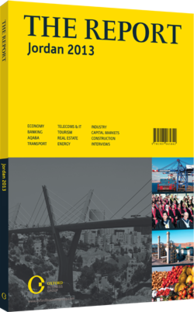
The Report
This article is from the The Guide chapter of The Report: Jordan 2013. Explore other chapters from this report.
Tourism has long provided a steady flow of revenues to Jordan’s economy, with the sector accounting for 13% of GDP. In 2012 the kingdom’s tourism industry rebounded nicely; tourism receipts increased 15.3% year-on-year from JD2.13bn ($3bn) in 2011 to JD2.46bn ($3.46bn) in 2012. While much of this boost in the sector can be attributed to the kingdom’s traditional tourist attractions such as Petra, the Dead Sea or Wadi Rum, travellers have increasingly found sanctuary in Jordan’s beautiful, yet unheralded, nature reserves.
CONSERVATION ACTIVITIES: The Royal Society for the Conservation of Nature (RSCN), which was established in 1966 under the patronage of the late King Hussein, is tasked with establishing and maintaining a diverse network of nature reserves in an effort to secure the country’s natural heritage. It is the leading force behind the growth in the kingdom’s ecotourism endeavours and its promotion of environmental conservation. Jordan’s geographical location has endowed it with a unique biodiversity and the RSCN oversees reserves that range from the wetlands of Azraq to Mediterranean woodlands in Ajloun and from the vast desert habitats of Wadi Rum to the exquisite coral reefs in the Gulf of Aqaba that are teeming with sea life. The RSCN is also responsible for the preservation of the many animal species that inhabit these reserves, and its efforts include an engagement in breeding programmes for some of the region’s endangered species.
DANA: The Dana Biosphere Reserve is Jordan’s largest nature reserve, covering over 300 sq km of diverse landscape and wildlife. It stretches into four separate bio-geographical zones: in the east, the biosphere’s mountainous terrain reaches 1500 metres above sea level and then, descends towards sea level through a series of immaculate canyons and “muffin top” gorges that are unlike any terrain in the region. Dana is also one of the most biologically and historically diverse of Jordan’s nature reserves. It is one of the oldest continuously inhabited areas in the world, containing remnants stretching from Neolithic villages to Roman aqueducts and on to Byzantine churches. The Dana Reserve is widely considered one of the top choices for hikers and nature lovers visiting Jordan, and in recent years the Dana Guesthouse, Rummana Campsite and the award-winning Feynan Ecolodge have become increasingly popular with travellers.
WADI MUJIB: The Mujib Nature Reserve is unique in the fact that it is the world’s lowest altitude nature reserve. Located on the east coast of the Dead Sea, it adjoins the sea at 410 metres below sea level, but extends all the way up through the mountains of Karak and Madaba to the north, at points reaching 900 metres above sea level. Mujib is one of the region’s most diverse nature reserves, with over 420 species of plants, 102 documented species of birds and a number of rare mammals including the Red Fox, Hyena, Jackal, Cara-cal, Badger, Mongoose and Nubian Ibex. The RSCN has implemented a successful captive-breeding programme for the Nubian Ibex within the reserve.
Aside from the opportunities to observe some of the regions most sacred wildlife, travellers to the Mujib Reserve can take part in adventurous activities that include a number of challenging hikes through the reserve’s cascade of mountains and through the water-filled canyons, a trek which often requires the adventurer to parallel down a series of rock cliffs.
SHAUMARI WILDLIFE RESERVE: The Shaumari Wildlife Reserve was created in 1975 as the country’s first wildlife protection reserve and has served as a model for other such reserves in the region. The desert reserve supports a vast variety of species and specialises as a breeding centre for globally threatened and locally extinct wildlife. In particular, the Arabian Oryx has ben-efitted from a successful reintroduction programme ( initially developed in partnership with the Phoenix Zoo) when the animal was all but extinct in the wild. The species has made a healthy recovery and has begun to thrive in the wild. Aside from the Oryx, travellers to the wildlife reserve are also able to view other rare desert animals, including Ostriches, Gazelles and Onagers.
You have reached the limit of premium articles you can view for free.
Choose from the options below to purchase print or digital editions of our Reports. You can also purchase a website subscription giving you unlimited access to all of our Reports online for 12 months.
If you have already purchased this Report or have a website subscription, please login to continue.
| Chapter overview View the The Guide chapter overview, from The Report: Jordan 2013 | Next chapter from this report Table of Contents, from The Report: Jordan 2013 |

This article is from the The Guide chapter of The Report: Jordan 2013. Explore other chapters from this report.
Explore any of the chapters below to select an article.
Stay updated on how some of the world’s most promising markets are being affected by the Covid-19 pandemic, and what actions governments and private businesses are taking to mitigate challenges and ensure their long-term growth story continues.
Register now and also receive a complimentary 2-month licence to the OBG Research Terminal.
Register Here×